|
⇤ ← Revision 1 as of 2012-08-08 09:46:02
Size: 1136
Comment:
|
Size: 1654
Comment:
|
| Deletions are marked like this. | Additions are marked like this. |
| Line 2: | Line 2: |
| (assuming of course, the foci performed this way with NIKA are reliable !). Two examples are shown below (foci at best weather conditions). |
(assuming of course, the NIKA foci performed this way are reliable !). Three examples - two obtained at best weather conditions on June 3 and one on June 4 (much worse conditions) - are shown below. |
| Line 9: | Line 10: |
| {{attachment:Mars_NIKA1mm-20120604s204_focus_fsn_YES_0.png | 1mm focus scan 204 June 4 2012}} {{attachment:Mars_NIKA2mm-20120604s204_focus_fsn_YES_0.png | 2mm focus scan 204 June 4 2012}} |
|
| Line 10: | Line 13: |
| As the 1mm and 2mm arrays are not perfectly aligned this should be in principle expected because of the beam broadening in not focused data. The focus difference depends on the (azim,elev) offset of the pixels used for focusing (thus on alignment of the two arrays and elevation), the HPBWs, ... |
The focus fit is given in each panel with "SFCZ=" (bottom left figure); the quality of the data is demonstrated by the error bars and the agreement of the signal in the two measurements at the same focus value. |
| Line 15: | Line 15: |
| '''The data obtained during run #4 do not allow any deeper analysis, i.e. this and the reliability of the foci has to be checked during the coming run. Another open question: variability of the focus across the FoV'''. |
As the 1mm and 2mm arrays are not perfectly aligned, a focus difference should be in principle expected due to beam broadening in the not focused data. The focus difference depends on the (azim,elev) offset of the pixels used for focusing (thus on alignment of the two arrays and elevation), the HPBWs, stability of the instrument, ... '''The data obtained during run #4 do not allow any deeper analysis, i.e. the reliability of the foci and the focus difference have to be checked during the coming run. Another open question: change of the focus across the FoV'''. |
The foci of NIKA1mm and NIKA2mm show consistently a significant difference of ~0.3mm (assuming of course, the NIKA foci performed this way are reliable !).
Three examples - two obtained at best weather conditions on June 3 and one on June 4 (much worse conditions) - are shown below.
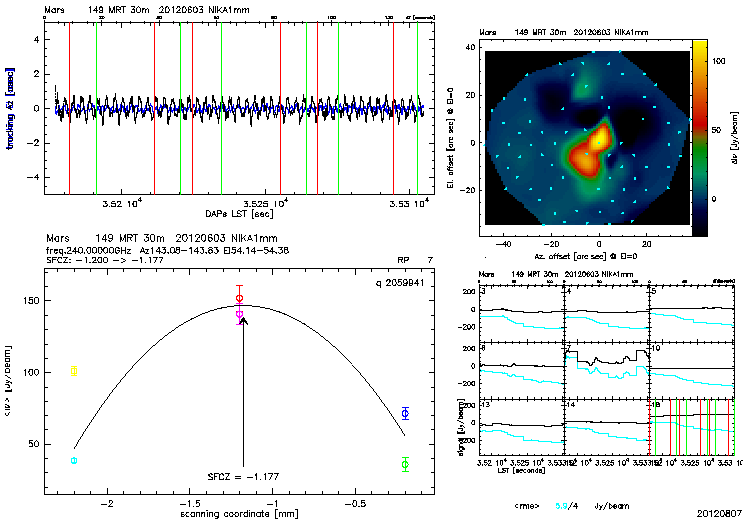

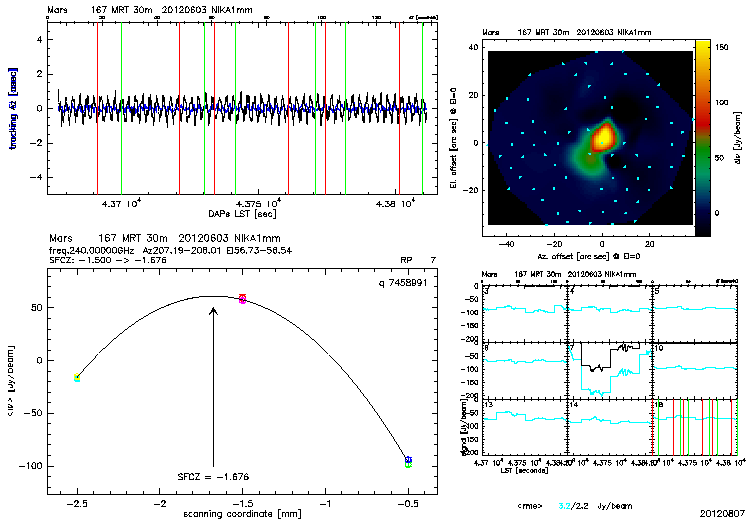
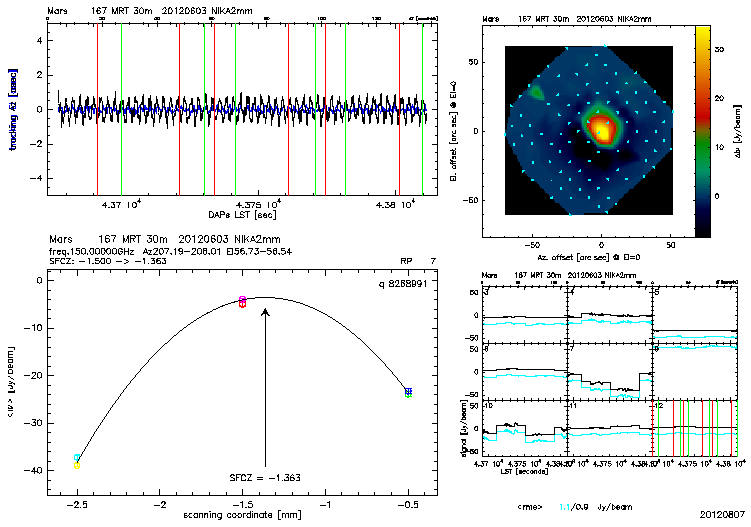
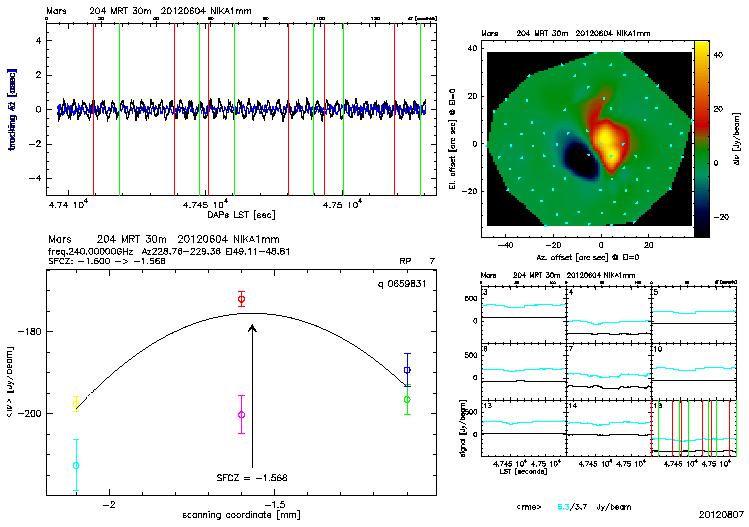
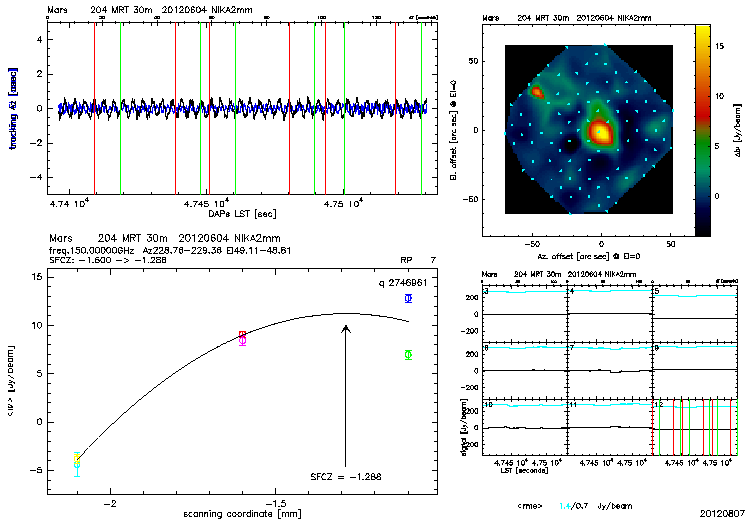
The focus fit is given in each panel with "SFCZ=" (bottom left figure); the quality of the data is demonstrated by the error bars and the agreement of the signal in the two measurements at the same focus value.
As the 1mm and 2mm arrays are not perfectly aligned, a focus difference should be in principle expected due to beam broadening in the not focused data. The focus difference depends on the (azim,elev) offset of the pixels used for focusing (thus on alignment of the two arrays and elevation), the HPBWs, stability of the instrument, ...
The data obtained during run #4 do not allow any deeper analysis, i.e. the reliability of the foci and the focus difference have to be checked during the coming run. Another open question: change of the focus across the FoV
